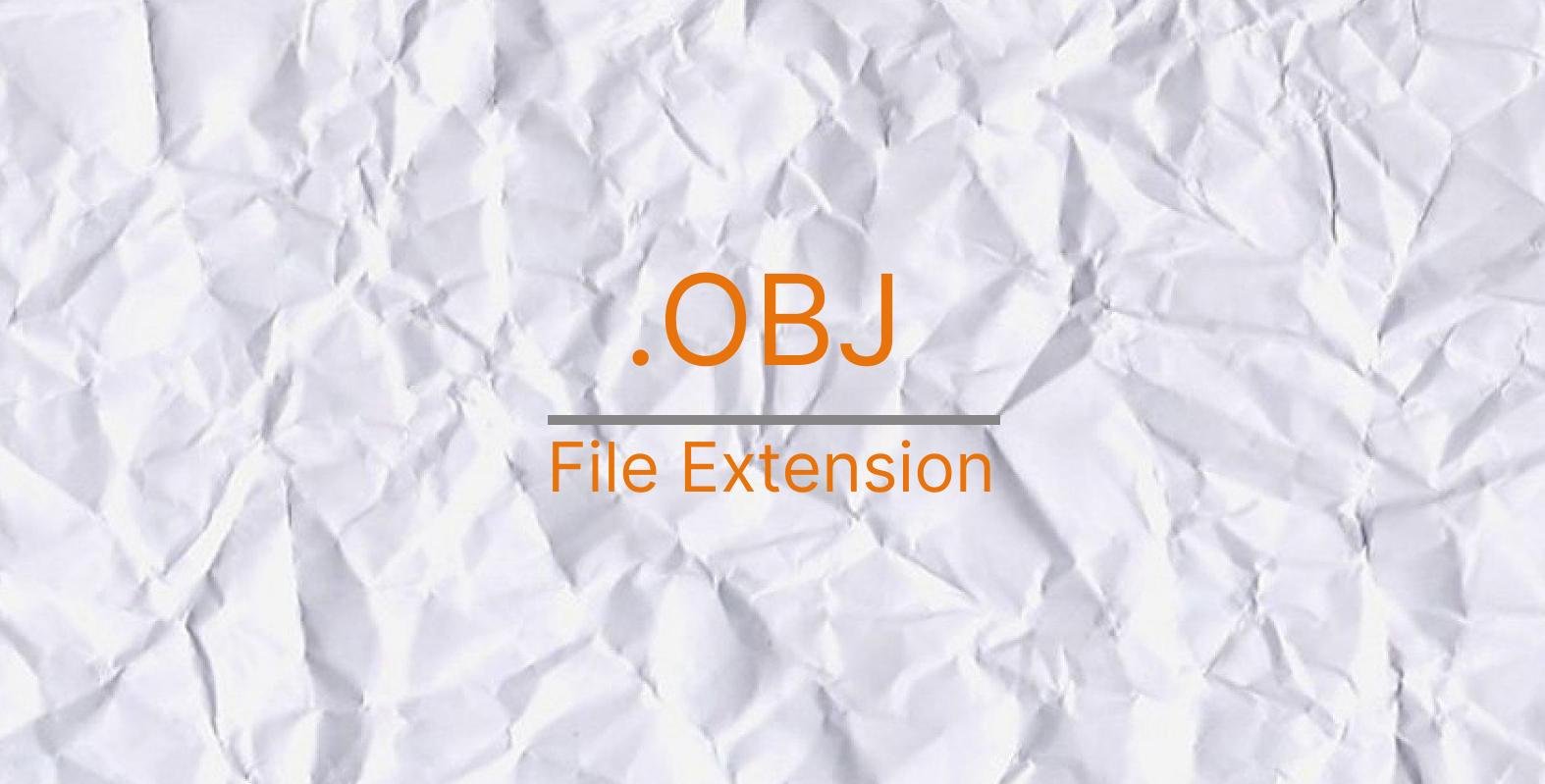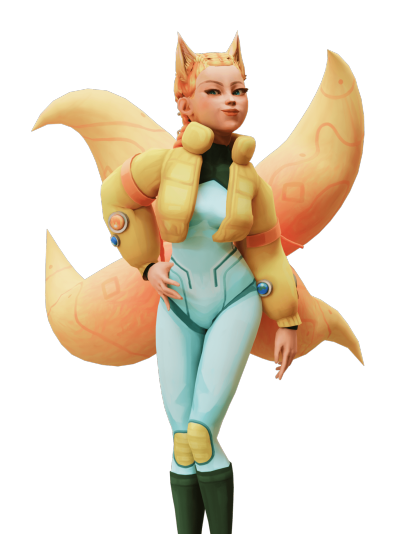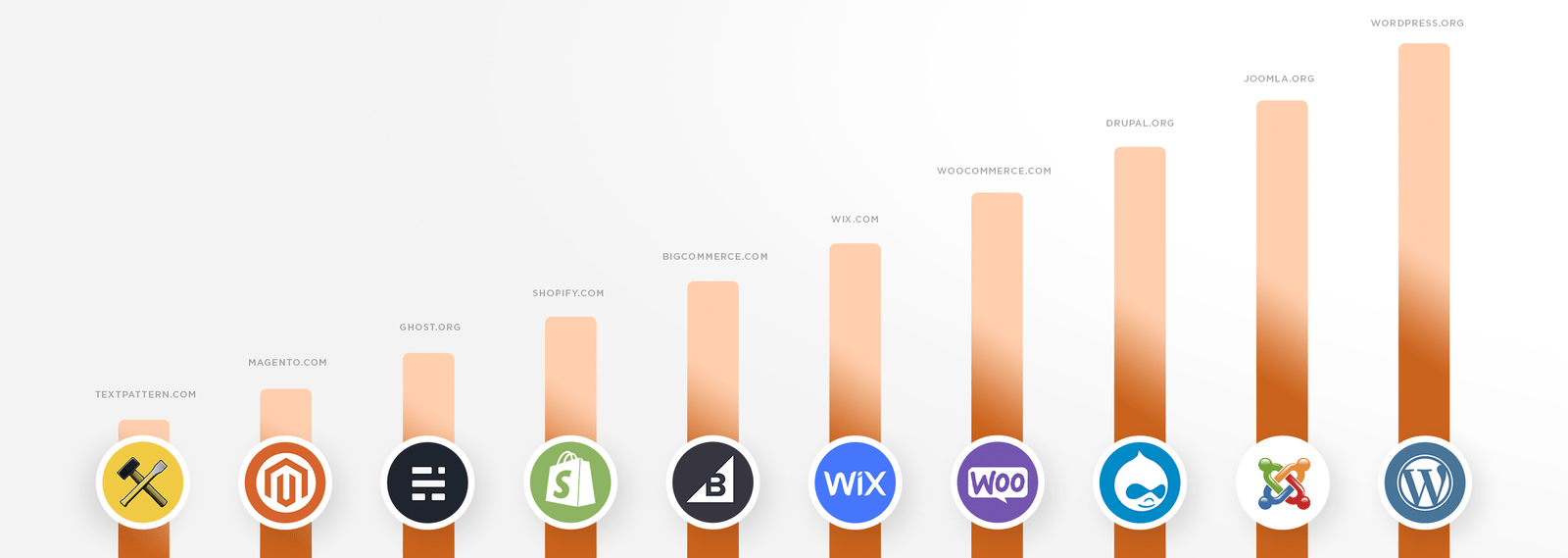OBJ File Extension Explained

3D files are used in many fields, including video games, films and computer-aided design. They make it possible to store information relating to models or 3D objects by encoding the various information of the latter, from the shape to the movement through the color, the texture or the light source.
There are many 3D file formats, suitable for different uses, whether they include many features or only one, whether it is a proprietary format or not.
In this article, we would like to present here OBJ file format: what kind of specificities it has, how it’s different from other formats. We will also go through the main features provided by the format.
What is an OBJ File?
OBJ (.obj) is an open and universally recognized format, originally developed by Wavefront Technologies. Structured in ASCII, it contains the description of the geometric data of a 3D model (vertices, texture coordinates, color). However, the OBJ format cannot support all information such as that relating to the animation of the 3D model. The .obj is therefore preferred for local work or for non-animated image exports.
OBJ File Format and 3D Printing
With the development of 3D printing, the OBJ format is experiencing renewed energy, particularly because it takes into account the display of colors, which the STL format, mainly used in this field, does not allow.
Besides, OBJs doesn’t fail the size of the file and transmit the quality of a picture as close to the original as it’s possible.
However, it’s important to remember that not all the 3D printers support the OBJ format for their own reasons, but this cannot be said about STL format.
Among the software supporting OBJ, we could mention Maya, Blender, 3D Studio Max or MeshLab.
OBJ File Format and 3D Graphics Applications
Let’s have a look at how OBJ files are used in 3D graphics. We will now speak about the OBJ file in comparison with other formats, such as COLLADA and FBX, because they are the most commonly used file formats in 3D graphics apps.
- THE DIFFERENCES
OBJ file format is different from the others mentioned above particularly because it doesn’t support animations and scene information, such as shadowing and light sources.
- ADVANTAGES OF OBJ FILE FORMAT
It’s an open format with wide import and export support, speaking about CAD software. It’s simple to use, because you can share it easily among different software programs and everywhere it’s going to look and work the same way.
Moreover, OBJ file formats are way more lightweight than FBX or COLLADA formats of the same 3D model, because of its native binary encoding.
OBJ file format is perfect when you don’t need to have a full scene of animations and it’s important for you to keep the quality as high as possible.
OBJ File Format: Materials and Color
The appearance of a 3D model is absolutely important. To get the best visual experience, you need to have all the information about the picture you see: color, material type, shapes, volume and so on: without this you would probably feel nothing.
Speaking of OBJ format, it’s necessary to keep in mind that the OBJ file doesn’t store all the data about the colors and textures in itself, because there is another supporting format made exactly for this purpose. It’s called MTL (Maternal Template Library). These two files work perfectly together to render a multi-colour 3D model.
MTL format also supports texture mapping, which is extremely important: every point in the surface or the polygonal mesh of a 3D model is mapped to a 2D picture, so while rendering these vertices and mesh are mapped first. Other points are coordinated between the coordinates of the vertices.
OBJ Files vs STL Files
We have already mentioned that STL format is supported by more software programs, but are there any other features? Let’s read on.
- OBJ format allow using texturing, colors and materials to be encoded
- The formats process non-triangular faces
- OBJ files encode 3D mesh topology
- It’s a vector file, so it doesn’t have a maximum file size
- The files are easier to put in a slice and print
How to Open and Edit OBJ Files
Do you have trouble opening a file that ends in .OBJ? These files can only be executed by certain programs. If you are unable to open the .OBJ file, it could be due to the following reasons: either you do not have an appropriate program to open it, or your file association is corrupted. For more information about this extension, please read the article below.
After double clicking on the unknown file icon, the system should open it in the default software that supports it. If this does not happen, you can do the following.
Step 1. Download and install any kind of software supporting OBJ file format.
If the operating system you use does not contain software that supports files with OBJ extension, you should download and install it first. Below you will find a list of the most-used applications that work with OBJ. After entering the program’s subpage, you will find a link to the developer’s website, where you can safely download the software installer.
Programs that open OBJ files:
Windows
- Adobe Photoshop
- AutoCAD
- TurboCAD
- Microphone Pose
- DAZ-Studio
- SolidWorks
- Light Wave 3D
- Adobe Creative Suite
- 3D Object Converter
- LogiKal
MAC OS
- Adobe Photoshop
- TurboCAD
- blender
- Cheetah3D
- MeshLab
Linux
- Maya
- blender
- GLC_Player
Step 2. Associate the program you chose with OBJ File Extension
If one of the applications is already installed on the user, the next step will be to associate it with the file extension OBJ. This can be done in two ways. The first is to manually modify the Windows registry keys and HKEY_CLASSES_ROOT. The second method is simpler and certainly recommended for less advanced users.
- Right click on the unknown OBJ file you want to open;
- Select “Open With” from the menu;
- Click “Choose another app”;
- Click “More apps”;
- Click “Find more apps on this PC” and provide the installation location of the appropriate program;
- Finally, select the option “Always use the selected program to open OBJ files” and confirm the entire operation.
Remember! Manually editing the system registry is only recommended for experienced users. Any changes made to it without sufficient knowledge may damage the system.
Step 3. Check out other possible problems related to OBJ files
Sometimes it happens that despite having the right application and the correct configuration, there are still problems with opening the OBJ files. You should then find out what the reason for the problem is.
- Check if the OBJ file is not infected. When the OBJ file is infected with a virus or malware, it probably won’t be able to be opened properly. In this case, scan the OBJ file and take the actions recommended by the antivirus program installed on the system. Most often, this is the disinfection or deletion of an infected file.
- Check if you, as the operating system user, have appropriate permissions to work with the OBJ file.
- Check if the icon is a part of the correct file, but not just a shortcut to where the OBJ file no longer exists.
- Check that the system has the necessary resources to run the LightWave 3D application and open the OBJ file.
- Check if the file is complete – Sometimes it happens that the OBJ file was not copied completely from the external flash memory, or downloaded from the internet. When the file is incomplete, it is not possible to open it correctly. In this case, please download or copy the OBJ file again.
Step 4. Contact an IT Expert
When all the above methods have failed, it remains to contact the developers of the LIGHTWAVE 3D program or an IT specialist: Cyber-Fox offers a great variety of different professionals who can help you with any kind of 3D-related problem.
You can contact us anytime: we focus on the quality of our job, so we find best solutions especially for you.
The Bottom Line
OBJ file format is a great solution for non-animated 3D models and you should carefully read the software you want to use, because some programs don’t support the OBJ format. In this article we shared the differences of the format, compared to other formats; and also how you can open it if the OS you use doesn’t allow you to open it.
we reply in 1 day









